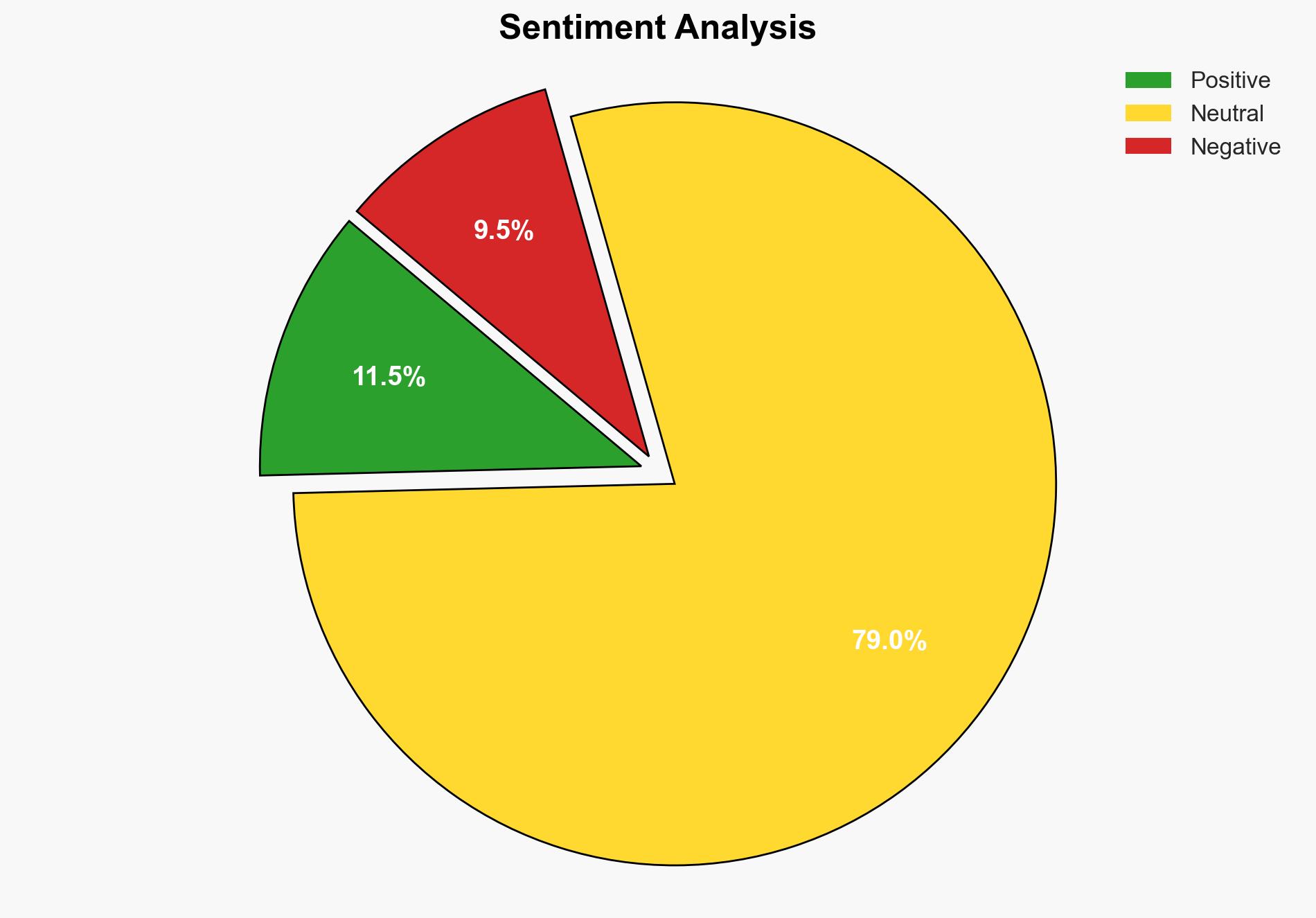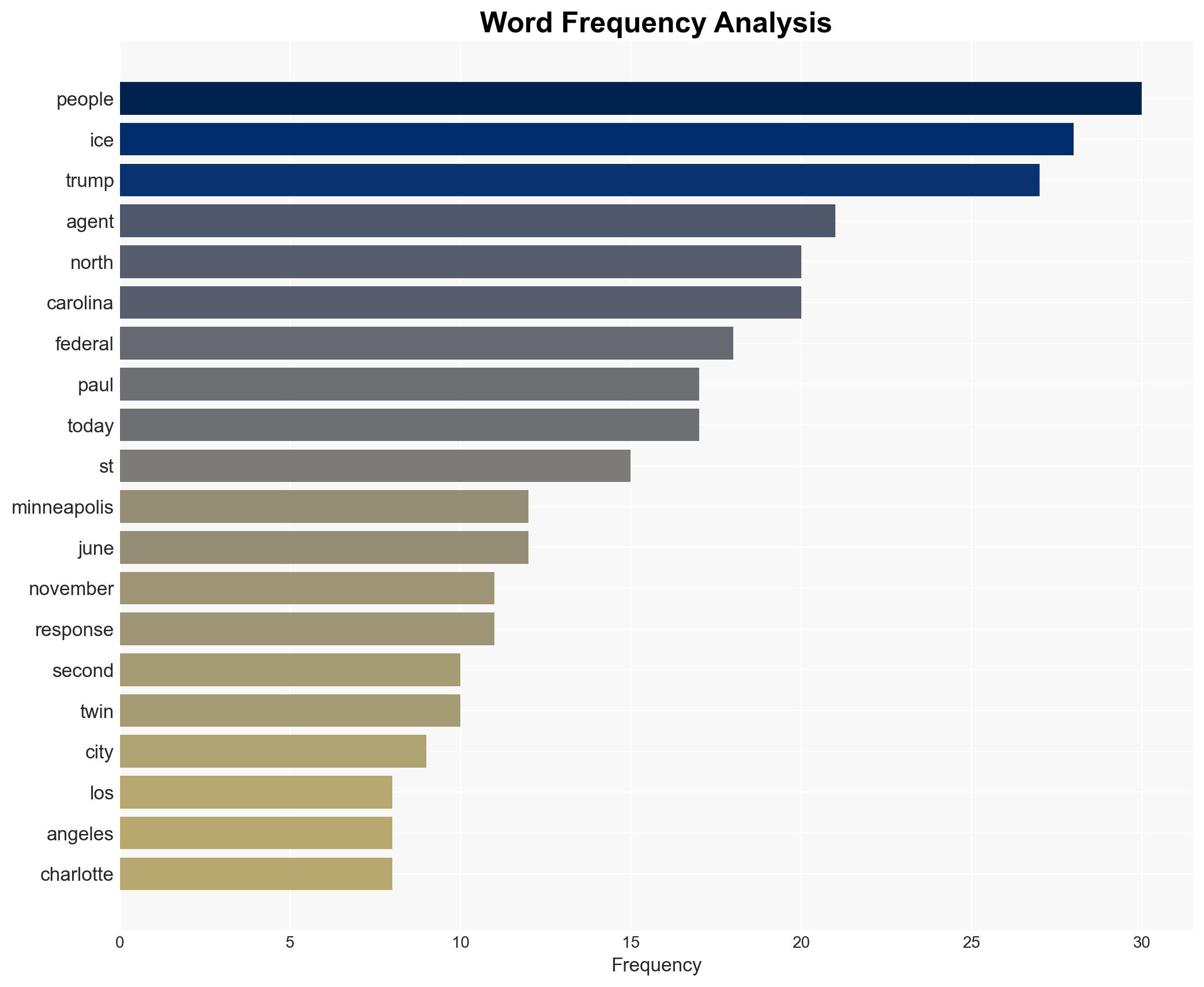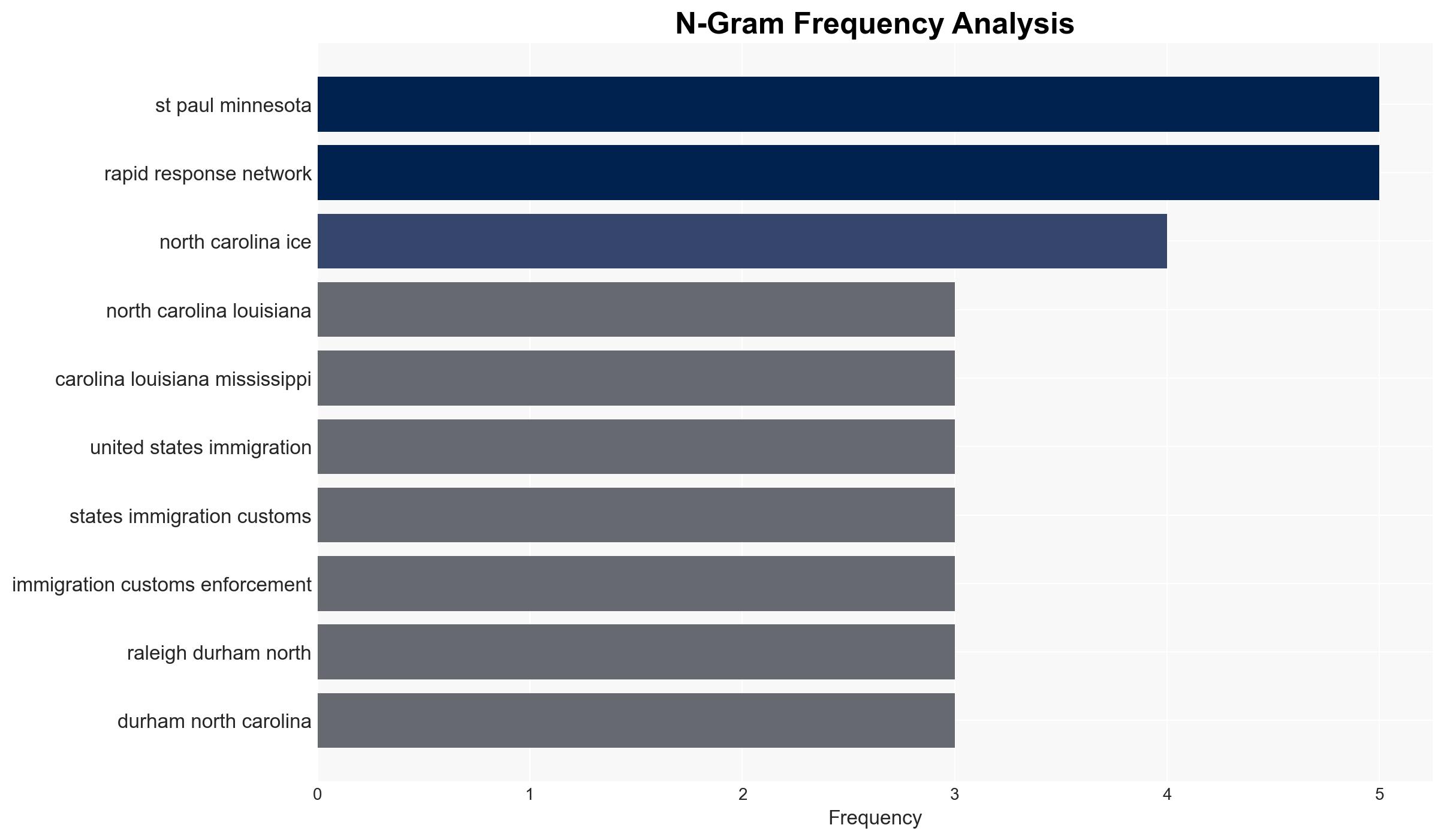Protesters Clash with ICE Agents Again in the Twin Cities A Firsthand Report – Crimethinc.com
Published on: 2025-11-18
AI-powered OSINT brief from verified open sources. Automated NLP signal extraction with human verification. See our Methodology and Why WorldWideWatchers.
Intelligence Report:
1. BLUF (Bottom Line Up Front)
The most supported hypothesis is that the Trump administration’s immigration enforcement actions are strategically aimed at provoking public unrest to justify increased federal intervention and consolidate power. This hypothesis is supported by the pattern of targeting Democrat-controlled cities and swing states. Confidence level: Moderate. Recommended action includes increasing monitoring of federal operations in swing states and preparing for potential unrest escalation.
2. Competing Hypotheses
Hypothesis 1: The Trump administration is using immigration enforcement as a tool to provoke public unrest, thereby justifying increased federal intervention and consolidating power. This is supported by the targeting of Democrat-controlled cities and swing states, which could be strategic for electoral influence.
Hypothesis 2: The immigration enforcement actions are routine operations aimed at enforcing federal law without any ulterior political motives. This is supported by the consistent pattern of ICE operations across various states, regardless of political alignment.
Hypothesis 1 is more likely due to the strategic selection of locations and timing, coinciding with political events and electoral considerations.
3. Key Assumptions and Red Flags
Assumptions include the belief that the Trump administration has a strategic motive behind the selection of enforcement locations. A key red flag is the potential bias in the source, which may have a predisposed stance against the administration. Deception indicators include the possibility of exaggerated reports of unrest to influence public perception.
4. Implications and Strategic Risks
The strategic risks include potential escalation of civil unrest, which could lead to increased federal intervention and a further polarized political environment. There is also a risk of international reputational damage if the situation is perceived as human rights violations. Economically, unrest could disrupt local economies and deter investment.
5. Recommendations and Outlook
- Actionable steps include enhancing intelligence gathering on federal operations in swing states and Democrat-controlled cities.
- Engage with community leaders to foster dialogue and reduce tensions.
- Best scenario: De-escalation of tensions through dialogue and policy adjustments.
- Worst scenario: Escalation into widespread unrest and increased federal intervention.
- Most-likely scenario: Continued targeted operations with sporadic unrest.
6. Key Individuals and Entities
Donald Trump (former President), ICE (Immigration and Customs Enforcement), DEA (Drug Enforcement Administration), FBI (Federal Bureau of Investigation).
7. Thematic Tags
Structured Analytic Techniques Applied
- Cognitive Bias Stress Test: Expose and correct potential biases in assessments through red-teaming and structured challenge.
- Bayesian Scenario Modeling: Use probabilistic forecasting for conflict trajectories or escalation likelihood.
- Network Influence Mapping: Map influence relationships to assess actor impact.
Explore more:
National Security Threats Briefs ·
Daily Summary ·
Support us
·





